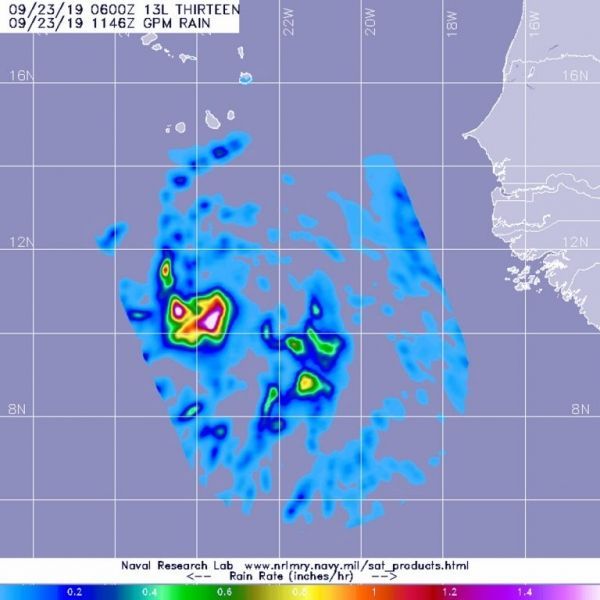NASA calculated the rainfall rates in the Atlantic Ocean’s newest tropical cyclone, Lorenzo.
NASA has the unique capability of peering under the clouds in storms and measuring the rate in which rain is falling. Global Precipitation Measurement mission or GPM core satellite passed over the region from its orbit in space and measured rainfall rates in the storms.
The Global Precipitation Measurement mission or GPM core satellite passed over the eastern North Atlantic Ocean on Sept. 23 at 7:46 a.m. EDT (1146 UTC) and provided rainfall rates in Tropical Storm Lorenzo. The heaviest rainfall was occurring around the center, falling at a rate of over 36 mm (about 1.4 inch) per hour and at a rate of 25 mm (about 1 inch) per hour around a band of thunderstorms southeast of center. Both the Japan Aerospace Exploration Agency, JAXA and NASA manage GPM.
Read more at NASA / Goddard Space Flight Center
Image: The GPM core satellite passed over the eastern Atlantic Ocean on Sept. 23 at 7:46 a.m. EDT (1146 UTC) and provided rainfall rates in Tropical Storm Lorenzo. The heaviest rainfall (pink) was occurring around the center, falling at a rate of over 36 mm (about 1.4 inch) per hour and at a rate of (orange) 25 mm (about 1 inch) per hour around a band of thunderstorms southeast of center. Credit: NASA/JAXA/NRL


